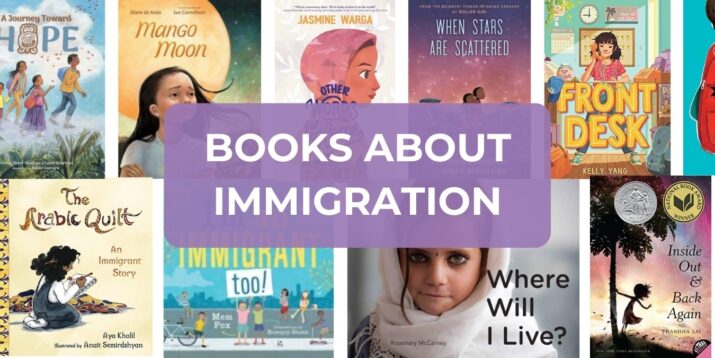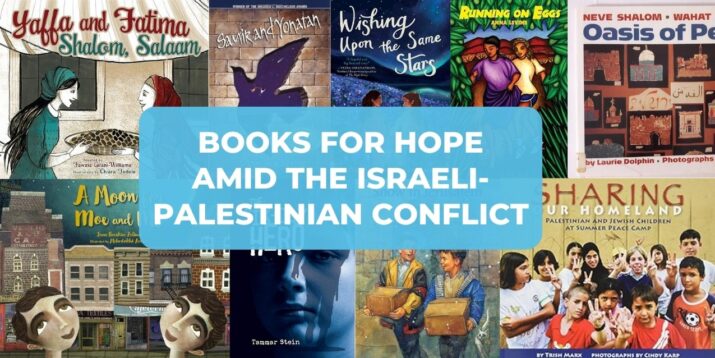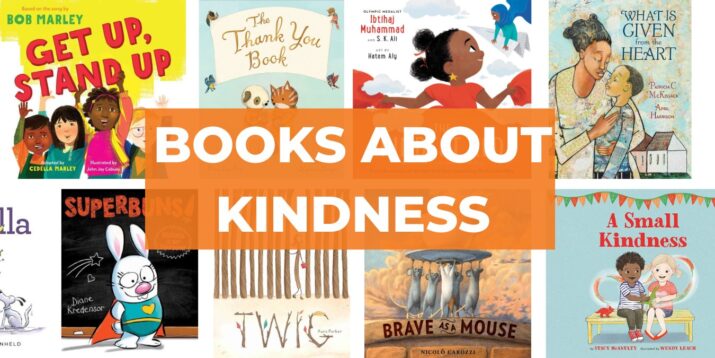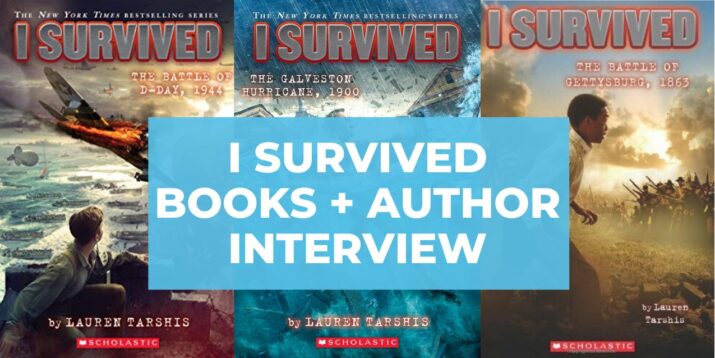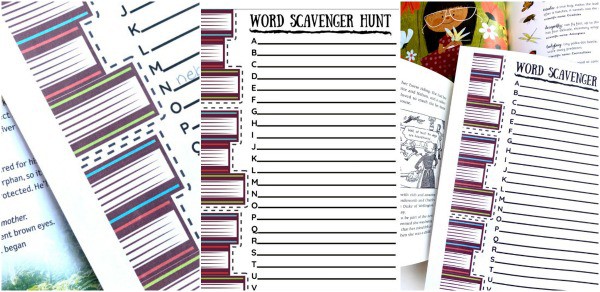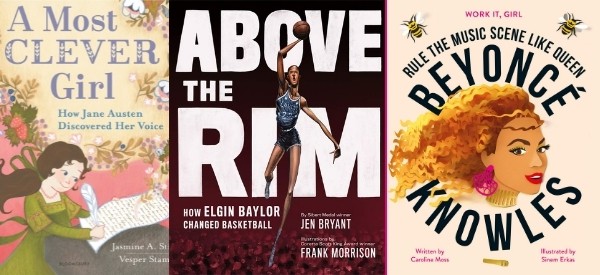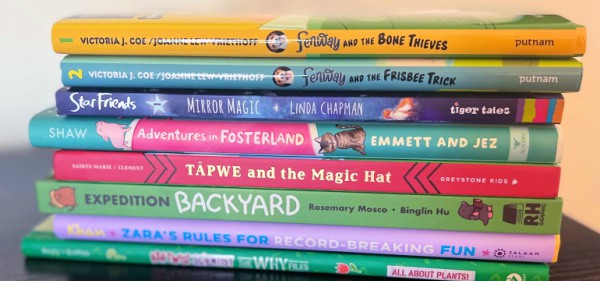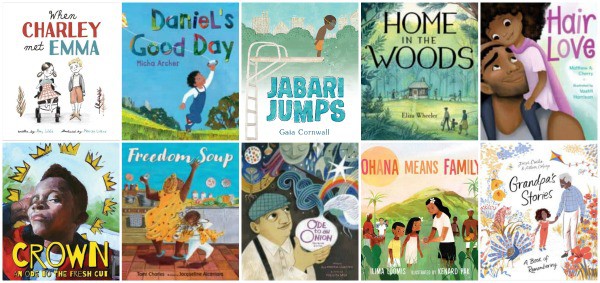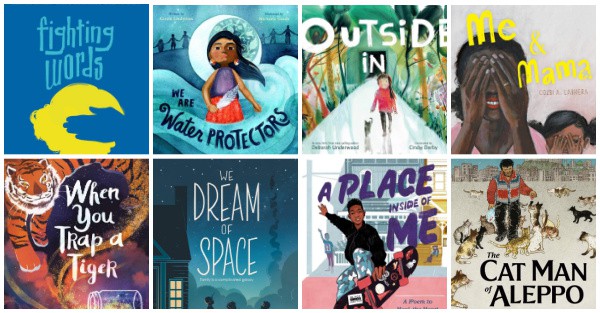10 Conflict and War Books for Today’s Kids
This post may contain affiliate links.
If only we didn’t need conflict and war books on the subject of violence for young readers, and yet we do. Follow any news apps these days, whether CNN, BBC, or YouTube, and you will find stories with images of bombs, rubble, hostages, and grief.
When my daughters were young, I remember trying to shield them from the Iraq War footage, as well as the 9-11 videos of the Twin Towers that were replayed through the years. Still, these stories do not escape the eyes and ears of our children. We must be cognizant that they are directly or indirectly observing and listening to the news of wars and conflicts in our world.
According to UNICEF, open conversations about conflicts (including bullying and aggression at school) are of utmost importance to families. In many ways, there isn’t a better place to start these discussions than through some age-appropriate books. This helps parents to understand what their child is aware of already.
As UNICEF notes: “It’s important not to minimize or dismiss their concerns. If they ask a question that might seem extreme to you, such as ‘Are we all going to die?’, reassure them that is not going to happen, but also try to find out what they have heard and why they are worried about that happening. If you can understand where the worry is coming from, you are more likely to be able to reassure them.”
With this in mind, here are some book titles that address many of these issues with a deft hand.
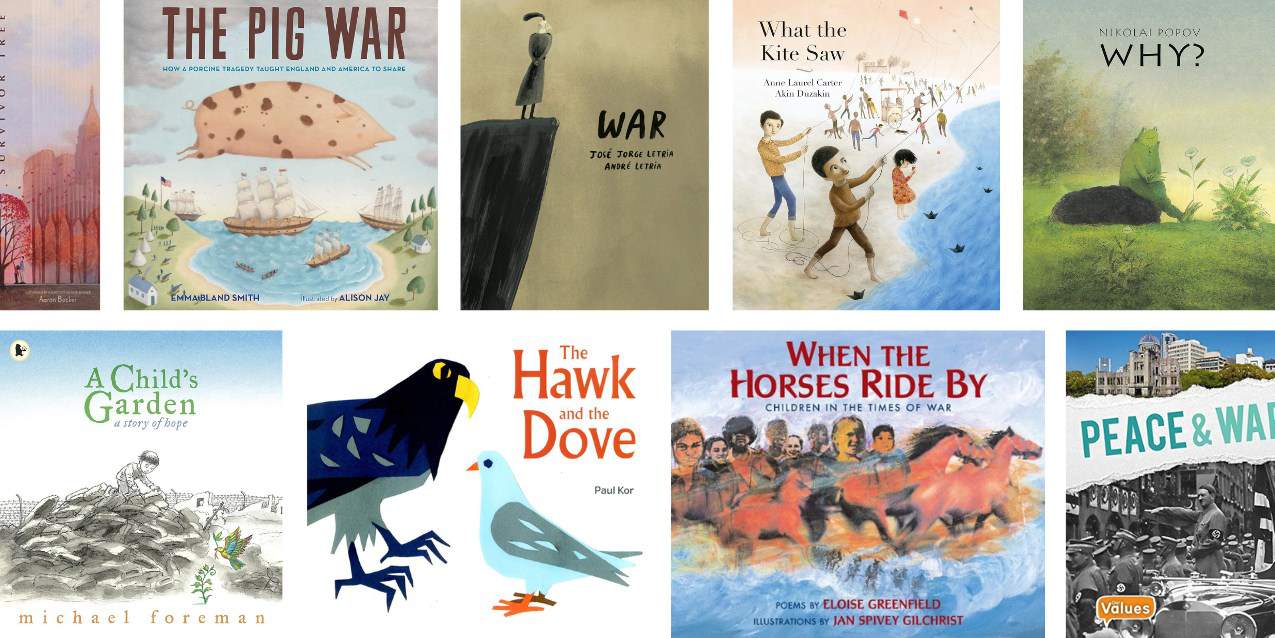
Conflict and War Books for Today’s Kids
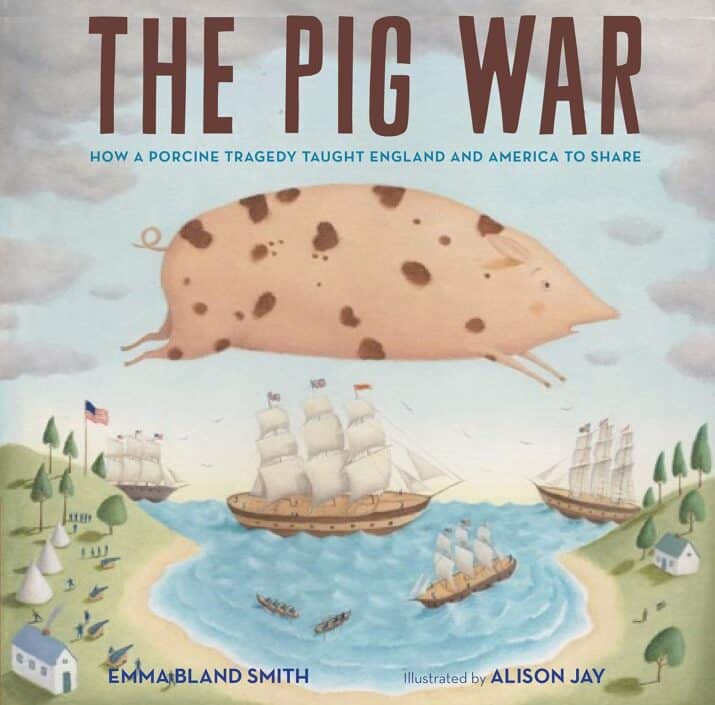
THE PIG WAR: HOW A PORCINE TRAGEDY TAUGHT ENGLAND AND AMERICA TO SHARE (Calkins Creek) by Emma Bland Smith, illustrated by Alison Jay
How do wars happen? Smith takes a lesser-known event (an almost forgotten one at that) and demonstrates to young readers how a simple disagreement can grow into a battle if steps toward negotiation aren’t taken. The incident began with a British-owned pig in San Juan who escapes and starts to devour the potatoes of an American farmer. In 1859, citizens of both countries coexisted on this island, sharing land and farms and camps. While this historical event is told in a humorous fashion, Smith demonstrates how hot-headed people can act on their anger.
Soon, dealings escalate, from a pig eating potatoes to ships and armed soldiers facing a potential battle. One of the best lines: “Oh, dear. What started as a Pig Incident and turned into a Pig Argument was fast escalating into a Pig Situation.” That’s it in a nutshell! Only when a cool-headed General Winfield Scott steps in, reason prevails and the men put down their weapons. In the end, both countries occupied the island peacefully. The British and the Americans even start to celebrate holidays together. The hope is that life can become even richer by evading a war.
An added bit of fun, the illustrator, Alison Jay, is from England. So huzzah! An author and illustrator from formerly warring countries worked together to create a wonderful story from history for children. Pub date: November 10, 2020
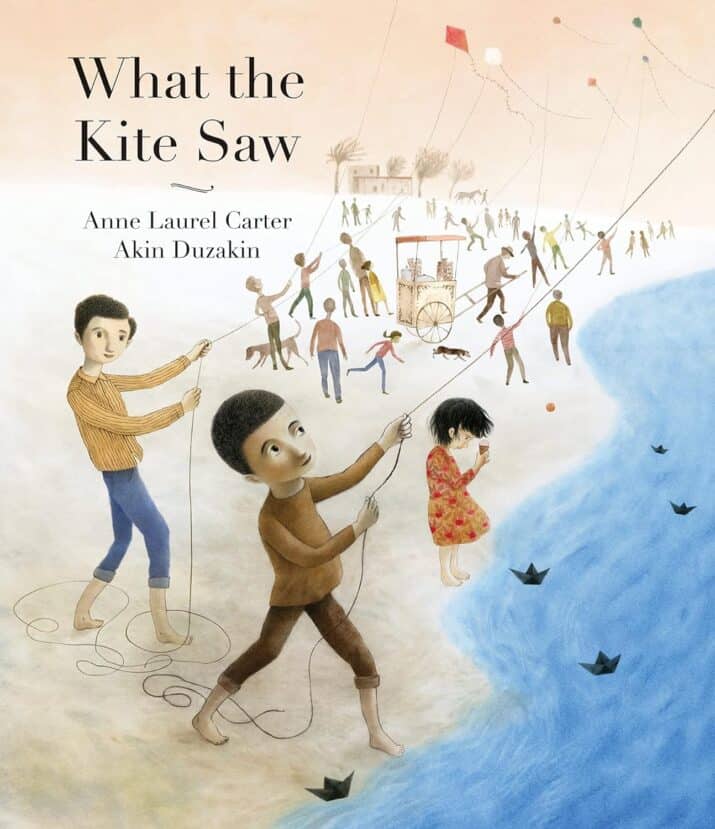
WHAT THE KITE SAW (Groundwood Books) by Anne Laurel Carter, illustrated by Akin Duzakin
If you are searching for a book that delves into the heart of war for a child who has experienced such loss or tragedy, this is that book. Told through the eyes of a boy whose town is occupied and whose father and brother have been taken away, he must navigate this unrest with others who remain in his town. Most of the day, his family must remain indoors, and yet there is a window of time when the boy is able to go outside and see his friends. With the flight of his kite, high above the tanks and the trees, he finds hope.
One of the most impactful lines is spoken by the main character: “That night, though I was too old, I slept on Mama’s other side.” We’re meant to ask: Why is he sleeping with his Mama? And why does he think he’s too old? A note of caution: While What the Kite Saw tackles the subject of war deftly, with sepia tones connoting the darkness of the subject, there is an indication of blood splatterings on the walls by the second spread. Pub date: May 4, 2021

WHEN THE HORSES RIDE BY: CHILDREN IN THE TIME OF WAR (Lee & Low Books) by Eloise Greenfield, illustrated by Jan Spivey Gilchrist
This is a diverse encounter with a variety of wars through Greenfield’s child-friendly poetry. This book captures the resilience of children, even in times of war, and the hope that they bring to others, even when the odds seem stacked against a peaceful resolution. From Ancient China and Egypt, to the South African protests and Iraq War, Gilchrist’s collage-like illustrations provide a place for conversations to begin when paired with Greenfield’s poems. Even through the anger and violence of conflict, dreams still emerge, like in a poem about the Iraq War entitled “I Imagine.” The last line tells so much. Pub date: September 1, 2006
But I hold on. I hold on
to dreams.
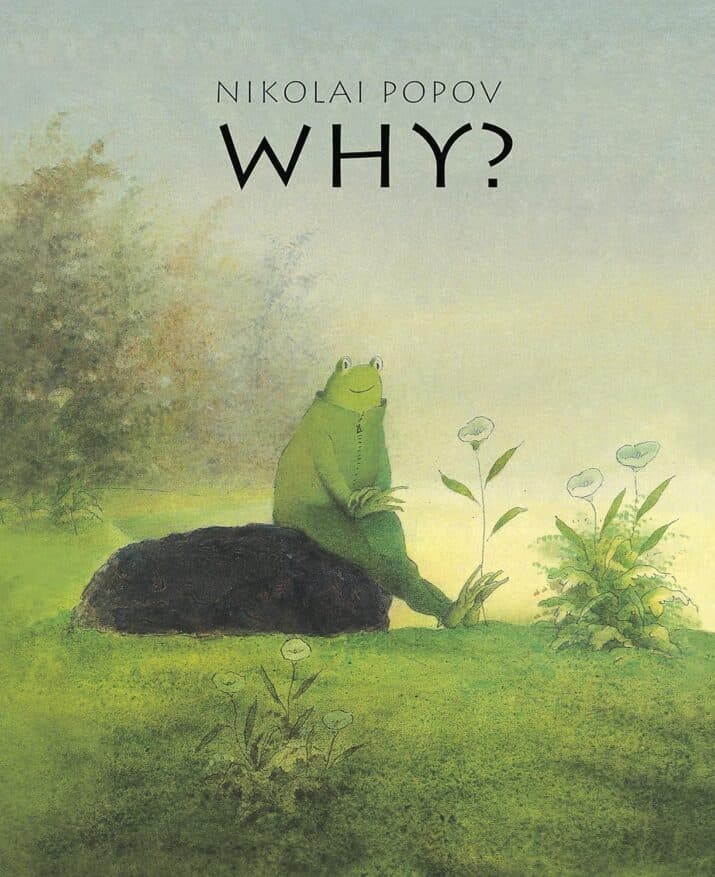
WHY?: A TIMELESS STORY TOLD WITHOUT WORDS (minedition) by Nikolai Popov
In the latest rendition of this modern classic, Popov says so much about war and its consequences through his watercolors. Without text, the child reader observes that a tiny injustice or jealousy may lead to a gargantuan misunderstanding with horrific consequences. We are left to ask lots of questions when the mouse with a beautiful umbrella decides to steal a frog’s simple pleasure, a white flower, which looks like a poppy. Why does the mouse feel like his umbrella isn’t enough? Why does the fighting escalate so quickly? Why does humankind (as depicted through mice and frogs) fight until there is only ruins beneath their feet? The illustrated scenes were inspired by Popov’s own childhood in his native Russia after World War II, but they also represent every war. Pub date: October 26, 2021
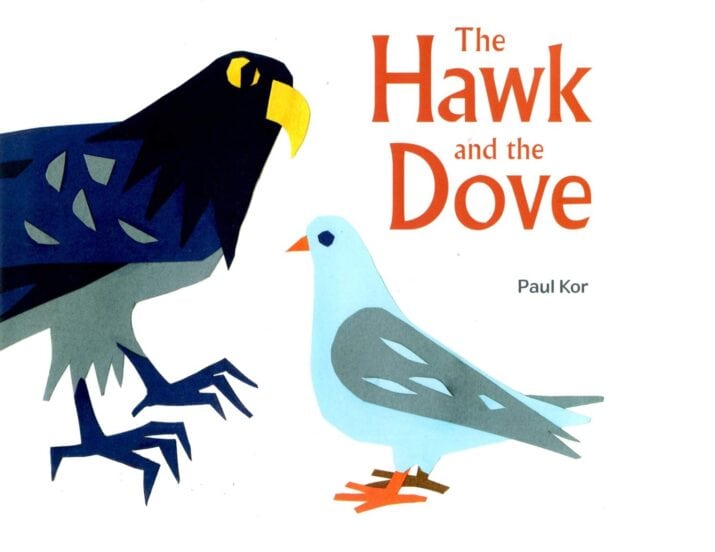
THE HAWK AND THE DOVE (Kids Can Press) by Paul Kor
This is a vision of world peace, not just for a child, but for adults, too. Through Kor’s amazing paper cutout techniques, he depicts a hawk who represents a warrior transformed into a peaceful dove. Soon, “Tanks fall silent. The battles cease.” With the turn of a page, a colorful tractor moves to “a tune of peace.” War planes morph into butterflies. Warships turn into “sails of gold,” and we’re left wondering how the story will end, and whether the hawk will show up again. The book allows for open conversations with children, since the whole story is a metaphor. While the message is far more simplistic than what might be achieved, it’s a good opener to the conversations about war and offers a hope for peace. Pub date: May 7, 2019
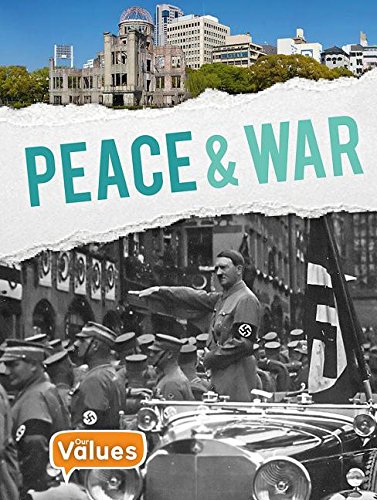
PEACE AND WAR (Crabtree Publishing Company) by Charlie Ogden
A non-fiction book that is part of a series called “Our Values” seems an important resource to include. This is for an older reader, but the definitions and conceits are helpful for a parent as well. In particular, the section on “Types of War” provides examples from civil to guerrilla and proxy. The text also prompts questions such as “Is war every justified or moral?” No matter what type of war, the cost to human life is clear. Also mentioned is the Israel and Palestine conflict, albeit from a pre-2017 context. Pub date: August 1, 2017
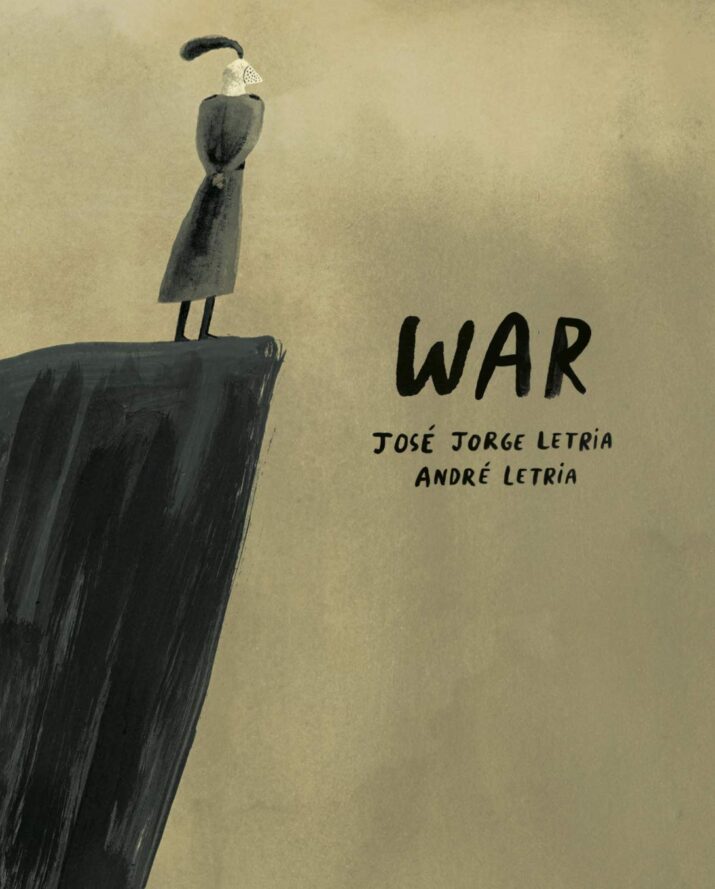
WAR (Greystone Kids) by José Jorge Letria, illustrated by André Letria
Wow! While this book is definitely for older readers (ages 9-12 years), it’s so powerful. With foreboding illustrations combined with the stark lyricism of Letria’s poetry, the effect is both dramatic and enlightening. Eerily, the desire for power enters into one man’s thoughts like dark spiders and snakes, and soon that leads to war. The destruction that follows is quite frightful. Letria’s words remain long after the book is closed. Pub date: August 24, 2021
War takes on the shape of all our fears.
War was never able to tell stories.
War is silence.
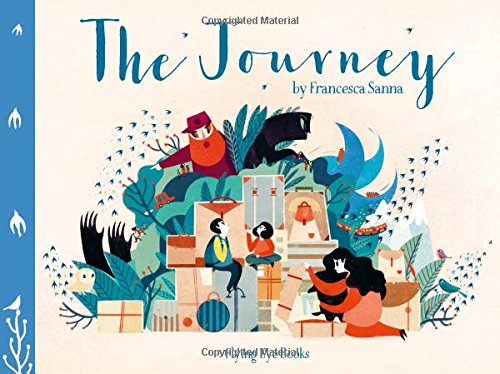
THE JOURNEY (Flying Eye Books) by Francesca Sanna
This debut picture book by Sanna takes the reader on a journey as two girls and their mother seek freedom from a war-torn country. Using fantastical creatures and images to approach all that is heartbreaking from a child’s perspective on war and the inevitable flight of refugees. Sanna creates empathy for families who are escaping such losses, and who are hoping to find safety. The reader feels the tension of escape, as if traveling with this family. This is an important addition to the list in order to see the displacement that follows war. Pub date: September 13, 2016
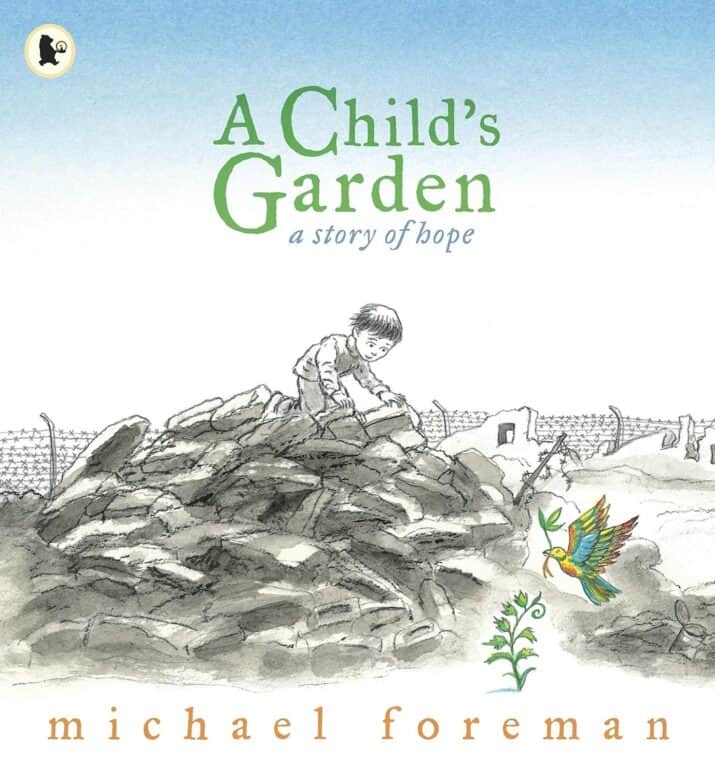
A CHILD’S GARDEN: A STORY OF HOPE (Candlewick Press) by Michael Foreman
A familiar story to many, this book is the hopeful side of these selections on war and conflict. Children need to know that there is resilience in the midst of hardship and heartache as well. Seeds of life can sprout in the ruins. In the story, a young boy nurtures a “speck of green” on the barren side of the fence, and watches it grow. When soldiers come to cut it down, we, too, might lose hope like the child. And yet, that’s not the story’s end. Even small shoots blooming on the other side of the fence, bring a sense of optimism. Not only is this a testament to the human spirit, but to the power of a child to have expectation of a better tomorrow. Pub date: May 3, 2010
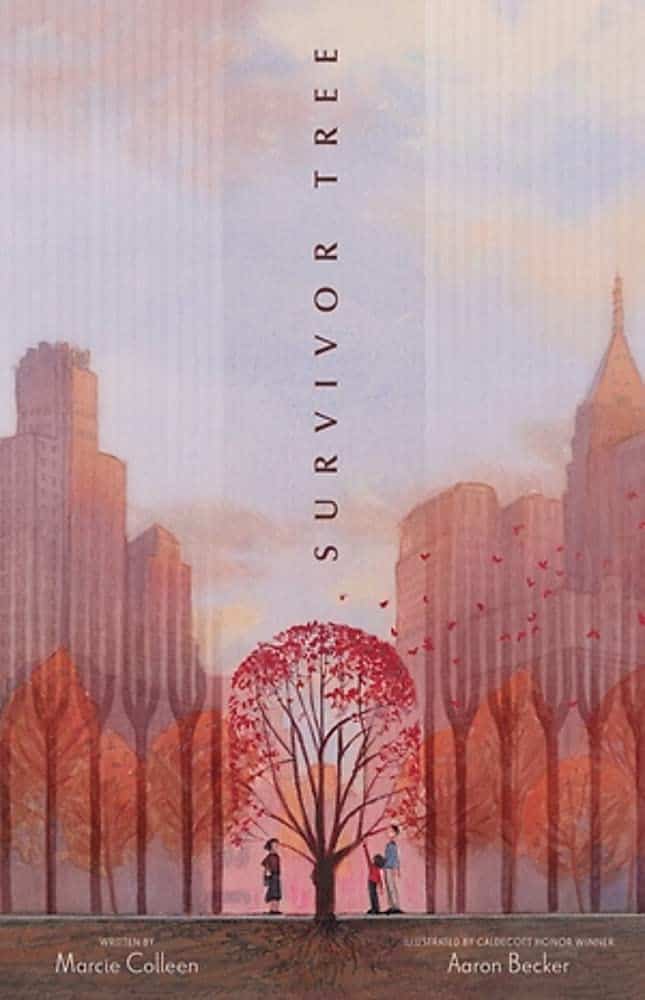
THE SURVIVOR TREE (Little Brown and Company) by Marcie Colleen, illustrated by Aaron Becker
Several stories have been written about this amazing tree that survived the 9-11 attack on New York City, but Becker’s illustrations make this one particularly stunning. It chronicles the life of the Callery pear tree which grew by the Twin Towers before their destruction (like our lives before), its recovery (moving it out of the ruins), and finally its transition back to where the two wading pools were installed. Those who tended this tree so carefully, who brought it back to life, are as much a part of the story through the illustrations, which provides a journey to empathy for the young reader. Pub date: August 31, 2021
As the UNICEF article “How to Talk to Your Children about Conflict and War” suggests: “Be ready to talk to your child if they ever bring up the subject. If it’s just before bedtime, finish up with something positive such as reading a favourite [sic] story to help them to sleep well.” Perhaps that means Llama, Llama, Red Pajama or Pajama Time! After all, laying our head down on a soft pillow at night is nothing to take for granted.

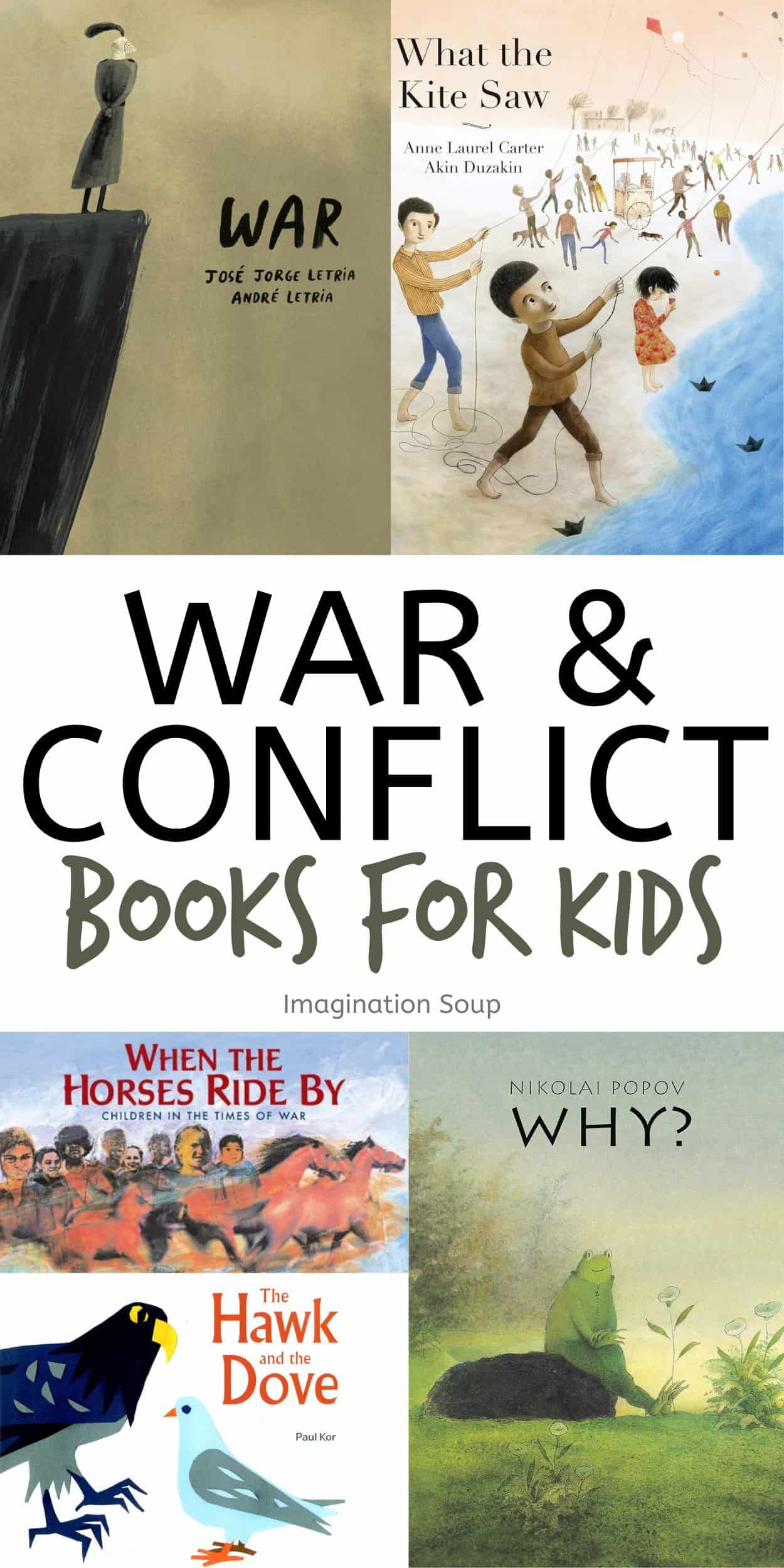
KEEP READING

